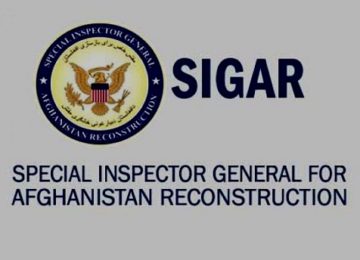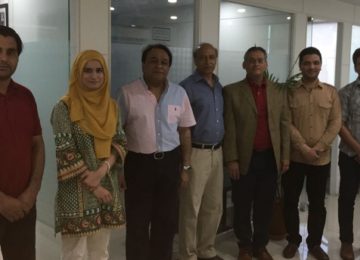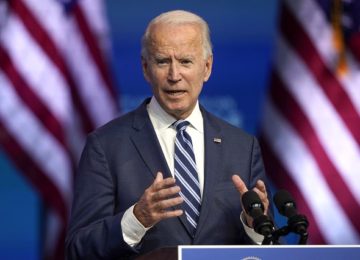After the fall of the Republic on August 15, 2021, the Oversight and Reform Committee of the U.S. House of Representatives asked Special Inspector General for Afghanistan Reconstruction (SIGAR) to investigate the causes of the collapse of the Afghan government and the relative success or failure of American reconstruction efforts to establish and maintain Afghan governing institutions since 2002.
Six elements were noted by SIGAR as contributing to the fall of the Afghan government:
1. First, the Afghan administration was oblivious to the fact that the US would truly withdraw. The United States had wavered on the subject of military withdrawal for almost 20 years and through three U.S. presidents. Even as the United States formally stated its intention to leave Afghanistan in the years before its departure, inconsistent messaging from American officials undermined efforts to persuade Afghan officials, who had an optimistic outlook on alternative outcomes, of the seriousness of U.S. intentions. As a result, when the US troops and its contractors left, the Afghan government was fundamentally unfit to lead the war against the Taliban.
2. Second, it was weakened and undermined by the Afghan government’s isolation from US-Taliban negotiations. Before the fall of the Afghan government in August 2021, a permanent political settlement that would bring about long-term peace and stability was the main objective of the United States in Afghanistan. That objective was hampered by the Taliban’s refusal to communicate with the Afghan government without first engaging in negotiations with the US. By dealing with the Taliban first, the United States attempted to avoid this and lay the way for an intra-Afghan peace process and perhaps an Afghan political settlement. The U.S.-Taliban accord, however, had no such impact. Instead, the Afghan government was weakened by its exclusion from U.S.-Taliban discussions and the belief that the United States was ceasing its support, and the Taliban re-energized their military campaign against it.
3. Third, although being in a precarious position, the Afghan government required that the Taliban be fully assimilated into the Republic, which made progress in peace talks challenging. There were terrible security conditions and Taliban strikes that were “beyond seasonal norms” when intra-Afghan discussions began in September 2020, according to the U.S. military. Political unrest had also grown as a result of the heatedly contested presidential election in September 2019 that was marred by fraud allegations. The Afghan government’s legitimacy took a further hit when it was excluded from U.S.-Taliban negotiations and then the deal was signed in February 2020. Despite these advances, during intra-Afghan negotiations, the Afghan government requested that the Taliban be incorporated into the Republic rather than exploring a completely new constitutional structure. A political settlement was made more challenging as a result.
4. Fourth, the Taliban refused to make concessions. The Taliban deal gave the rebel organization more clout. The insurgency began to concentrate more and more on battling the Afghan government on the battlefield after that. The start of intra-Afghan negotiations coincided with an increase in Taliban attacks, which undermined the fledgling peace efforts and led U.S. officials to assert that the Taliban was not keeping its promise to stop the bloodshed. The Taliban “is confident it can win militarily,” according to a U.S. intelligence community assessment from April 2021. As the insurgency quickly took control of half of Afghanistan’s 419 districts, the Taliban’s attack accelerated over the course of the following two months. Kabul was overrun on August 15, 2021.
5. Fifth, the administration was unstable at a crucial time because the former president of Afghanistan, Ashraf Ghani, operated through a very selective, small circle of supporters. Ghani, a former World Bank executive and popular in the international world, maintained an uncompromising and undiplomatic stance toward potential competitors already at the start of his first term in 2014. Both the president’s personality and his determination to centralize and control policy implementation appear to have contributed to his political and social isolation. It is challenging to determine how much Ghani’s isolation and propensity for micromanagement contributed to the downfall of his government in a complicated political context. But it seems to have undermined the Republic by (1) power brokers and other groups, eroding their support for the administration; and (2) limiting the president’s access to crucial information, impeding effective decision-making. The result was a leader who was mostly unaware of the situation his country was in, especially soon before the Republic’s demise.
6. Last but not least, the Afghan government’s extreme centralization, pervasive corruption, and fight for legitimacy throughout time all played a role in its eventual demise. A procedure for establishing a new political system in Afghanistan that included the adoption of a new constitution and democratic elections was established by the Bonn Conference, which met in late 2001. The Bonn agreement, forged between diverse Afghan political forces, gave the Afghan president more control. Afghanistan’s democratic system increased the stakes for political competitiveness and re-ignited long-standing tensions between a modernizing urban elite and traditional rural masses that distrust central government. The election procedure was a subpar remedy. The credibility of Afghanistan’s democratic elections had been declining for a while, culminating in a final election with an estimated voter turnout of just 10%. The Taliban, on the other hand, had a straightforward rallying cry that the government was unable to use: they were fighting foreign occupiers, they were less corrupt than the government, and they were legitimate because of their religious beliefs.
The Afghan state was fundamentally damaged by widespread corruption, which included ongoing electoral fraud and opportunistic behavior on the part of government employees. In the end, the Afghan government’s level of centralization, combined with its frail and corrupt makeup, exacerbated its legitimacy issue and ultimately led to its downfall.
Source: SIGAR
Date: November 22, 2022







